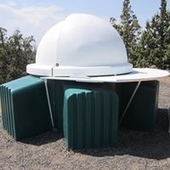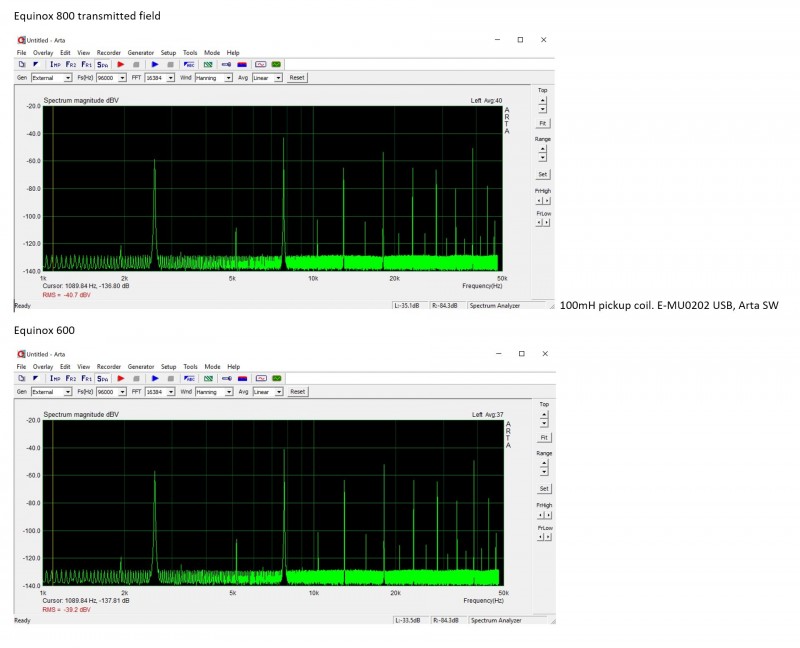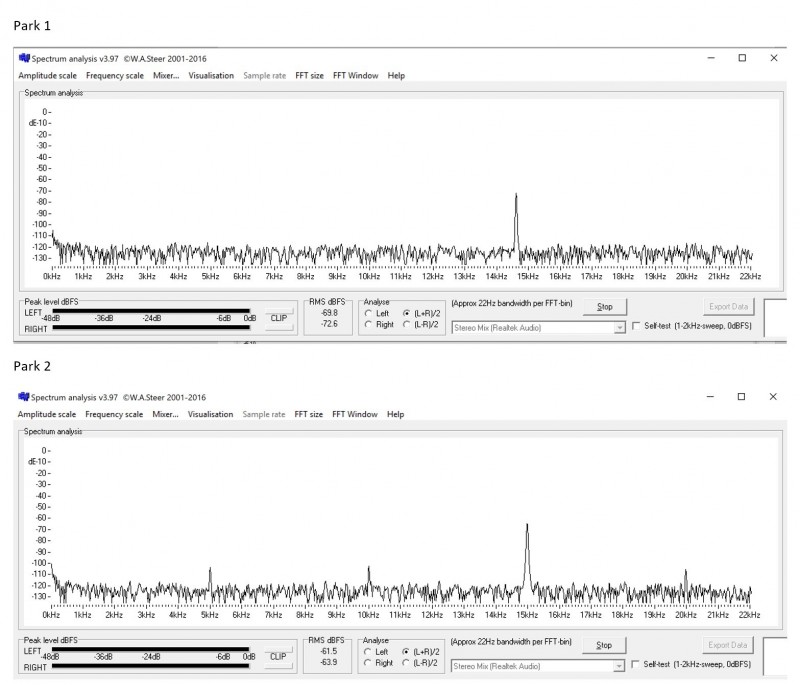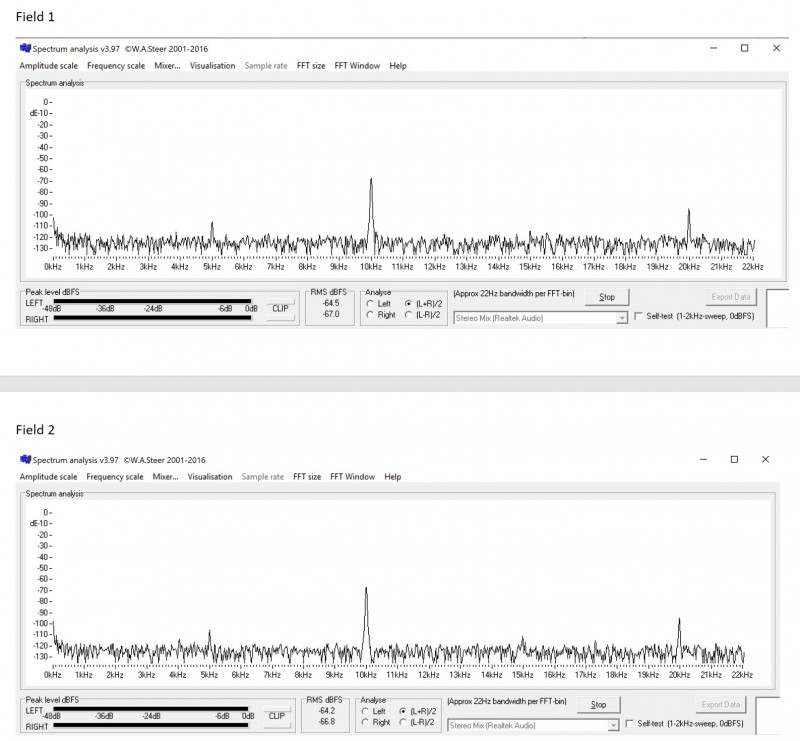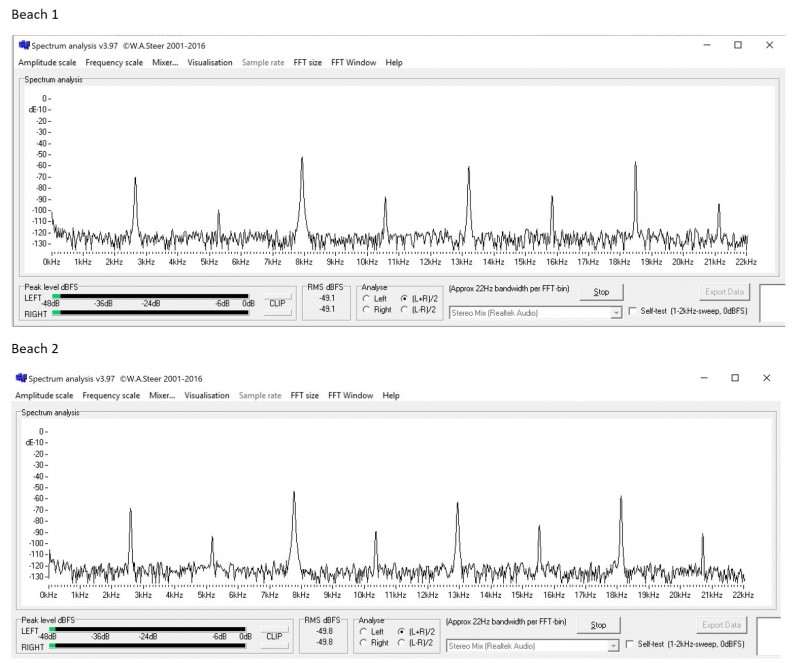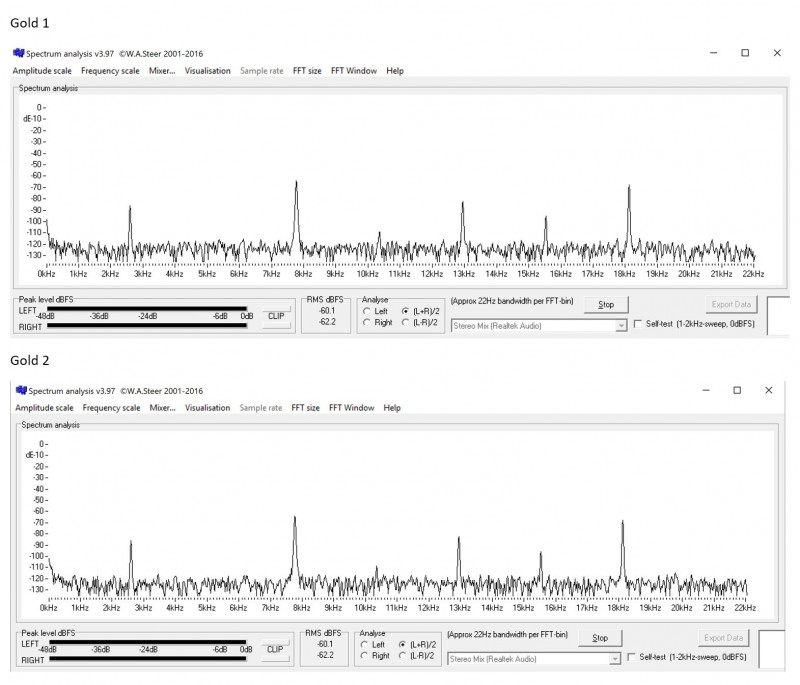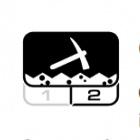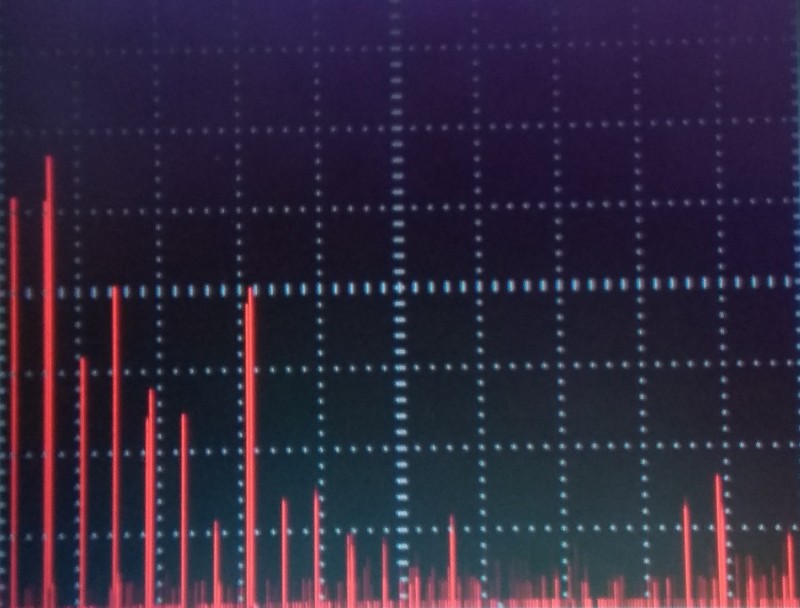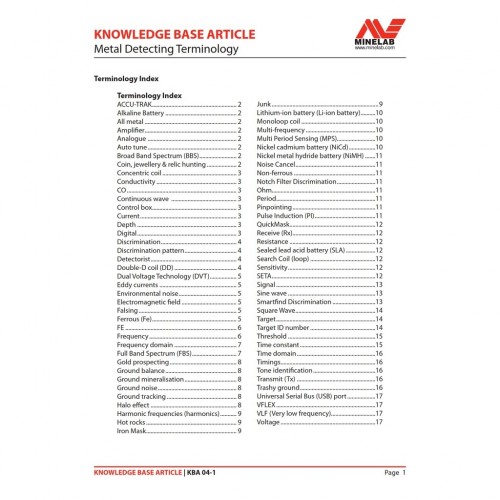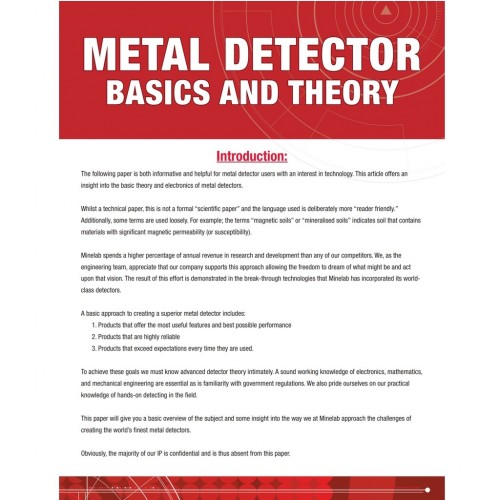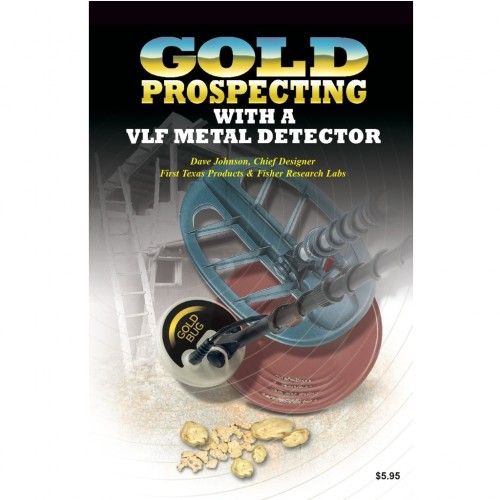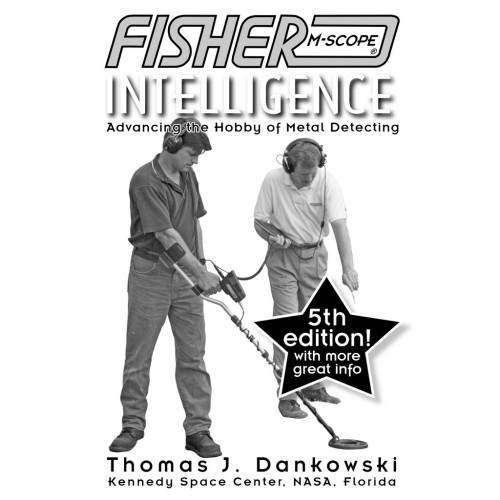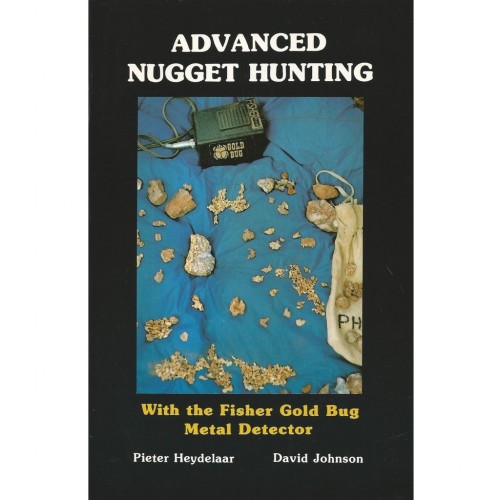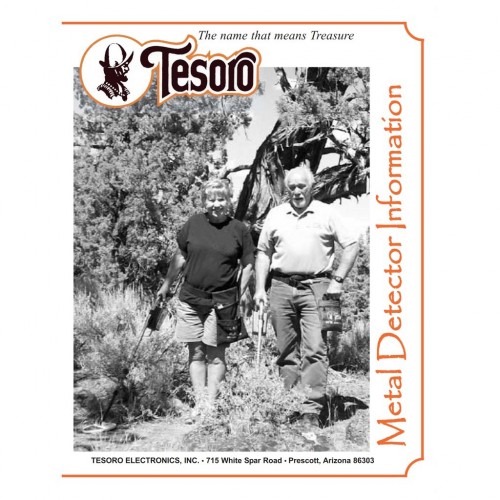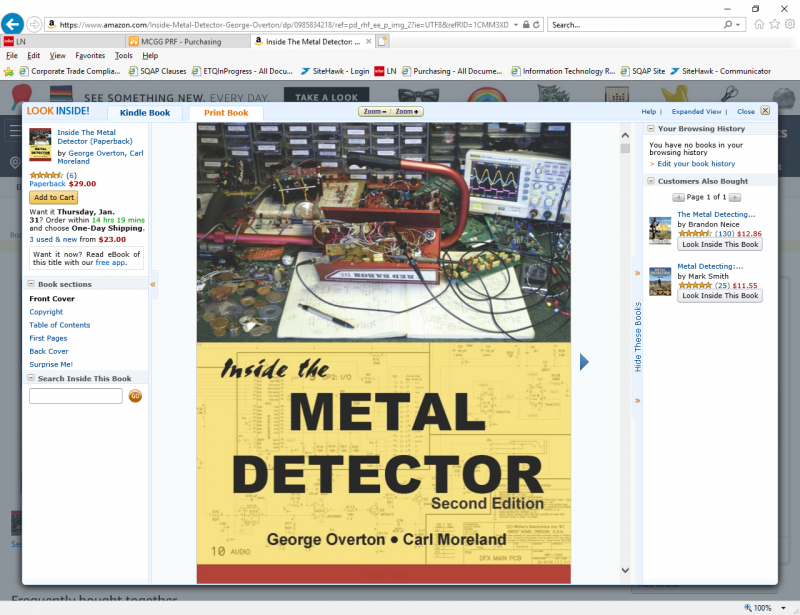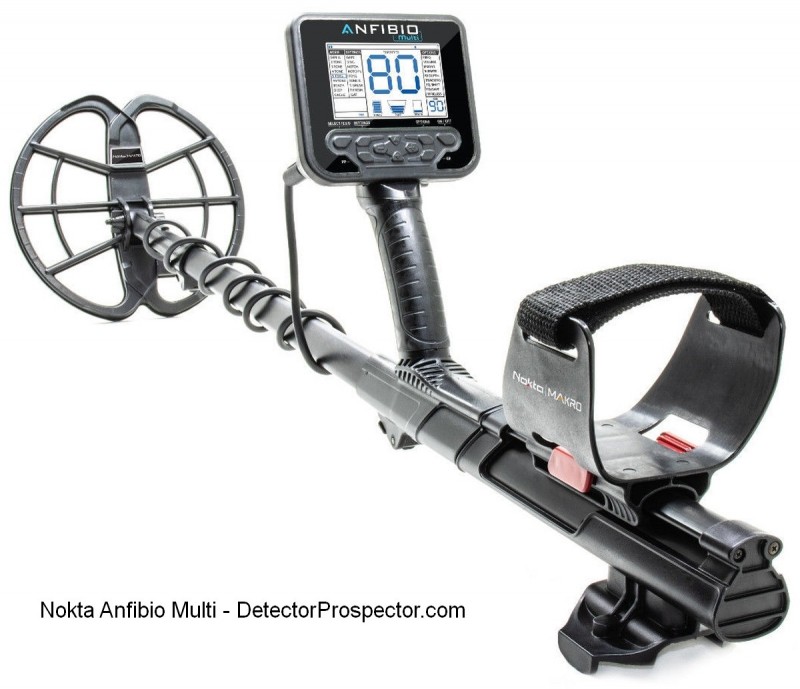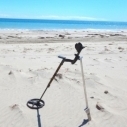Search the Community
Showing results for tags 'detector tech'.
-
Good evening, I’m venturing into the spotlight here with my first post to ask what likely amounts to a novice’s question. It stems from an experience I had about a year ago with finding my largest nugget. The location was in a small creek bed, which had been conveniently cleared of cobbles and overburden down to a small patch of bedrock surrounded by smooth, silty clay by a dredger. Using a GM 1000, I had detected out several small nuggets from within the bedrock cracks that had been exposed, but not properly crevassed by the prior prospector. However, the thick clay surrounding the exposed bedrock had pockets of varying degrees of moisture. This was providing me a bit of challenge since the wetter spots seemed to be behaving just like hot spots. After an extended wrestling match with the wetter signals and the available settings, I gave up. However, by the time the next weekend came around, I just couldn’t get those wet spots out of my mind. With the heat of the summer and record drought conditions, I guessed those spots may have dried just enough to deserve one final pass. Within minutes of returning, I had found a solid, repeatable, 2 bar non-ferrous signal in the deepest clay pocket on the upstream side of the rock. (This exact spot had seemed masked the week before.) Digging 4-5 inches down into the smooth clay I found a “rock” that made my detector sing. Cleaning it off revealed a beautiful 1/3 ozt. nugget. Call it beginner’s luck—because I do. Now for my question. Were those wet spots of clay giving me fits because of greater relative mineralization, heterogeneity of moisture, or VLF technology? Perhaps it was some of each? Part of my curiosity stems from never having used a PI detector. For those of you with plenty of PI experience, do you also struggle with wet spots or mud spots for lack of a better term? And, if so, are certain PI detectors more resistant to the struggle? Thanks for any input you might spare.
-
I believe there is not much more they can squeeze out of VLF technology, even multiple frequency has it's limits and is really only 2 frequencies. Are manufactures better off concentrating on coil design rather than just tweaking an existing design adding a letter or two to the name? After market coils quite often improve a detectors performance, so shouldn't manufactures be looking in this area rather than using the same coil designed years ago? Would like your thoughts
-
Would love to get your opinions and feedback on this machine coming to market supposedly soon, and supposedly uses a BT connection from your phone or smart device to control the coil. Similar to Deus, but using a phone or iPod touch etc. as the controller. Believe it's single frequency. Here's a video demo. I've long liked the idea of a setup like this but I thought there were good reasons the major players have not created a machine utilizing a phone or iPod touch this way, so I'm skeptical.
-
I myself like the looks of screen of my MX Sport but not the weight. It would be great for it to trim some fat off of it. Out of all the ID numbers it has to offer I’d like to be able to notch out one at a time. We all know that different frequencies is better than others depending on what you’re detecting. If I can I’d like it to be multi frequency where I can run in all and single one if I do wish. What I want is a detector that it will do the major part of my detecting. My thing I’m a coin hunter first be it on a beach are around some old homestead . I’ve never been a relic hunter but it would have to offer the same for that person too . I love nugget hunting but it’s just not a lot of gold in Texas but it would be great to have some high frequencies to nugget hunt. I don’t see the need that I should have to buy another detector for what little I do get to nugget hunt. We all different and our wants runs different too.I know too it’s other detectors offer the things I’m wanting from White’s right now but I’d like to see America made on the side. Chuck
-
I've seen debate about this question over and over. Thanks to Minelab's vague description of their use of Multi-IQ on both machines. I measured both the 800 and the 600 (my backup machine) and can put this to rest. They both output identical spectrums.
-
I hooked up a sensor coil to pick up the transmit frequencies from my 800. Connected to an audio spectrum analyzer I could see what was being transmitted in all the modes. Surprise, Park 1 uses only a single frequency ~ 15KHz. The amplitudes shown are relative.
-
Just finished a second day hunting with the new Mirage PI. Short days, I seldom go for more than 2-3 hours, but enough to start learning a new to me machine. Something I notice and wonder about. The 9.5" mono coil appears more sensitive to iron near the edge of the coil, while nonferrous seems to hit harder near the center of the coil. Could that be a thing or am I deluded? If it is a real thing, is it a reliable way to make dig decisions? I could swear I read something somewhere about this, but am no longer sure because I am deluded in general anyway. Anyone got thoughts?
-
i have my dual field that the pots were starting to act up a while ago and decided to get new pots etc so after removing the board to remove the pots i had to remove all connections etc so im not 100% on were they connect now on the board along with the speaker ,coil etc, if any one is able to help i really appreciate it . cheers
-
How does IB detectors compare to VLF and PI's? Worth trying to build one or just a waste of time?
-
Published on Jan 19, 2019 - Just a quick video showing the benefits of the Vista Gold running at a higher kHz and using zero gain in highly mineralised soil Here are the videos, after further testing I can confirm that the 15 kHz hits stronger on deep silver in clean Non Mineralised Soil and both are exactly the same on the gold coin at depth in Non Mineralised Soil.
-
Deep in the depths of winter here, I found myself partaking in some serious speculating. With all the controversy of whether or not the Equinox is multi frequency or not, I figure I'd bring some wood to keep warm lol. Some of you may recall in one of those threads I was trying to explain that the waveform we see can actually be comprised of more then one, two, three or more frequencies. Additionally I pondered if the multi frequency processing could just be done on the receive side using typical sinusoidal waves that are actually doing the work. Nonetheless here is the transmit side, the side that actually excites the target. Below you will see a FFT (Fast Fourier Transform) of the Equinox in Gold2. The scale goes from DC to 125 kHz. (Left to right) If you consider the advertised range of Multi-IQ frequencies as being 5 kHz to 40 kHz, you might be satisfied by this as the left half of this 125kHz graph is filled out nicely. There is even a couple little peaks up around 100 kHz, whether or not that is utilized I don't know. I'm way off base as to how MIneslab actually does this, but I just wanted to show the kind of information that can be extracted from these signals. I am not trying to prove anything specific other then to say I don't think Minelab is being misleading IMO. Assume something is a little off with my measuring, still that looks like multi-something. The approximate frequency peaks of interest measured from left to right are: -2.5 kHz -8 kHz -13 kHz -18 kHz -23.5 kHz -28.5 kHz -33.5 kHz -39 kHz -44 kHz -50 kHz -54 kHz -59.5 kHz That covers the advertised range of frequencies which exist on the left hand side of the graph, (Midpoint is 62.5 kHz) I wont bother with the higher frequency stuff as it may not be relevant. It doesn't really hit any of the single frequencies, on the other hand Minelab does not explicitly say what frequencies are used in Multi-IQ. (That I know of.) I am happy to see that low frequency response. I was thinking the Equinox was going to be all 8 kHz and higher, which it basically is, but I'm glad to see the 2.5 kHz peak right beside it and of almost equal strength.
-
-
Version by Bruce Candy, Minelab
461 downloads
Metal Detector Basics And Theory by Bruce Candy, Minelab 1.42 MB pdf file, 24 pages Bruce is a co-founder of Minelab and the man behind their most advanced designs. This information delves into much greater detail than the above link and has many more illustrations and diagrams. Minelab Metal Detector Forum -
Version by Dave Johnson, First Texas
352 downloads
Gold Prospecting With A VLF Metal Detector by Dave Johnson, First Texas 10 Mar 2010 Edition, 2.93 MB pdf file, 56 pages Dave is the Chief Designer for First Texas Products and has been involved in designing most of the VLF gold prospecting detectors sold over the last 30 years. This is an excellent primer on using VLF detectors to prospect for gold. First Texas (Bounty Hunter, Fisher, Teknetics) Forum -
Version by Thomas Dankowski, Fisher Labs
194 downloads
Fisher Intelligence - Advancing the Hobby of Metal Detecting by Thomas J. Dankowski, Fisher Labs 5th Edition 04/2006, 6 MB pdf file, 48 pages Thought provoking articles on aspects of metal detecting not often talked about. First Texas (Fisher) Forum -
Version FRL870295A 3rd Ed 1993
300 downloads
Advanced Nugget Hunting With the Fisher Gold Bug Metal Detector by Pieter Heydelaar & Dave Johnson, Fisher Labs 3rd Printing Jan 1993, 2.36 MB pdf file, 46 pages This out-of-print book is a good basic text on gold nugget detecting. Although it uses the original Fisher Gold Bug as an example the information applies to most nugget detectors. Part 2 by David Johnson is an excellent primer on hot rocks. First Texas (Fisher) Forum -
Version 2010
104 downloads
Tesoro 2010 Metal Detector Information #22, 2.61 MB pdf file, 64 pages This detector catalog and field reviews is packed full of extra information that will be of interest to anybody who has or is thinking of getting a metal detector. Lots of good answers to basic questions. Tesoro Metal Detector Forum -
-
Can someone explain to me what makes this new Anfibio different from a X TERRA 705 the 705 can run three different frequencies all be it you have to change coils to be able to run any of the three different frequencies it can run the Anfibio you push a button to change frequencies but with that being said I also know I can purchase a coil from a manufacturer that pretty much allows me to run one coil on the 705 and just by turning the 705 off and back on in a short time period it changes to one of the different frequencies that the 705 can run in in other words one single coil will run 3 KHz,7.5 KHz,and 18.75 KHz all done with just one coil so can someone please explain how the Anfibio is any different from the X TERRA 705 and not trying to start a bashing war here just trying to understand how the Anfibio is much different from the 705.
-
I was just wondering if you had the opportunity to test a new detector before it came on the market would you be willing to do it ? Most of the time it’s given to people you could say that their name is in lights . We have so many people that has been swinging a detector for years that are more qualified than the so call star . Let me hear your view point on this subject . If you ever have the pleasure or opportunity to do it in the pass let us hear that too . Chuck
-
This is something that has me a little perplexed, especially when a whole raft of opposition detectors from abroad are offering such an option on their detector platforms. How easy would it be to improve current popular models like the F75, AT Pro, etc with additional frequencies to make some US made detectors a more attractive proposition, or are we talking about the requirement for a completely new platform for this to happen ( too much cost for not enough return)? If just worries me when we see little or no response at all on trying to compete on the selectable frequency front. Some may say the market is already flooded with such detectors, though if you do not offer up an alternative to just single frequency VLF's, then customers may look elsewhere for detector platforms offering more flexibility/features for the money. Some of the selectable frequency detectors made abroad: Minelab Equinox (plus multi) Minelab 705 (coil change for different frequencies) Rutus Alter71 XP Deus/Orx Makro Kruzer Multi Nokta Impact Nokta Anfibio multi ...and many other lesser known Euro manufacturers with at least dual frequencies. It is evident that there are two distinct lines of thinking when it comes to producing a detector, either make one that has the capability of covering all or most fields of detecting (ie. prospecting, relic hunting, coin shooting, beach detecting), or produce several detectors, each with a specific purpose. The obvious downside is the sheer cost of owning a whole raft of detectors for specific purposes, something that used to be common place, though now not such an issue with the advent of very capable multi-use detectors suitable for low conductors right through to sub gram gold. Will be interested to see other views on the subject, have we seen the end of single use or specialist detectors, and whether multi-role/multi or selectable frequency detectors will rule going forward.
-
This coming new year provides an interesting contrast between two companies who’s fortune rests on technology. One company quite established that has either by choice or constraint had a rather stagnant new technology history. The other a new startup that feels that it has a new technology. And is entering the marketplace at a price point that would be considered by most as a Flagship statement model. While the Minelab Equinox has pressured the lowering of prices for some competitors, Tarsacci has demonstrated the confidence to offer a product at close to double the price of the Equinox’s. If Tarsacci were a new company with limited experience in metal detector design and manufacturing, then success might be more tenuous. However the principal engineer has a strong background for the task at hand. On the other hand if Tesoro had the engineering horsepower then I would place my bets on them, as standing up a new company is usually riskier than re-invigorating a known entity. I’m really sad to say that Tesoro evokes a woulda, coulda, shoulda of Technology from me. Tarsacci MDT 8000 Data & Reviews
-
It is so many single frequency detectors out there and yes some do have more you can access. It really don’t make any difference it’s still one frequency at a time. What I can’t understand is more are being made and if not on the market already like we’ve seen this year . It will be another nugget and coin detector should be out by the end of November. Oh it’s telling how many frequency you can hunt in but still one at a time. I know I sound like a broken record saying one at a time but that’s the truth of the matter. When Minelab came out with the Equinox they raised the bar at a higher level that others have yet to reach . This is what all of the other detector companies have to strive for . If they can just equal the Equinox will keep them in the running. I don’t see Minelab just sitting back without looking at the Equinox saying how can we make it better. I myself is swinging a single frequency detector and I do like it . I’m not saying they don’t have a place in the detector market but over time will be less and less . I’ve owned a Equinox 800 and I loved it but had it with the wait on a small coil so I sold it. If some others don’t come out with something to equal it in early 2019 I’ll get me another Nox . Chuck
-
Hey guys, do the ground balance numbers indicate mineralization? And if so how do the numbers correlate.
-
For some reason I have never turned on my machines in the house, i always go out in the field, or for VLFs the yard, and turned on there to learn. I was curious if you turned on your machines like the Zed, PIs and VLFs inside, would it hurt the electroincs? Especially if its constanly overloading or going off on all the crazy EMI. I just want to turn on to play with the settings and practice more with the buttons, etc.. Not actually detect. Funny been detecting now for 5 years and never bothered to ask or try





